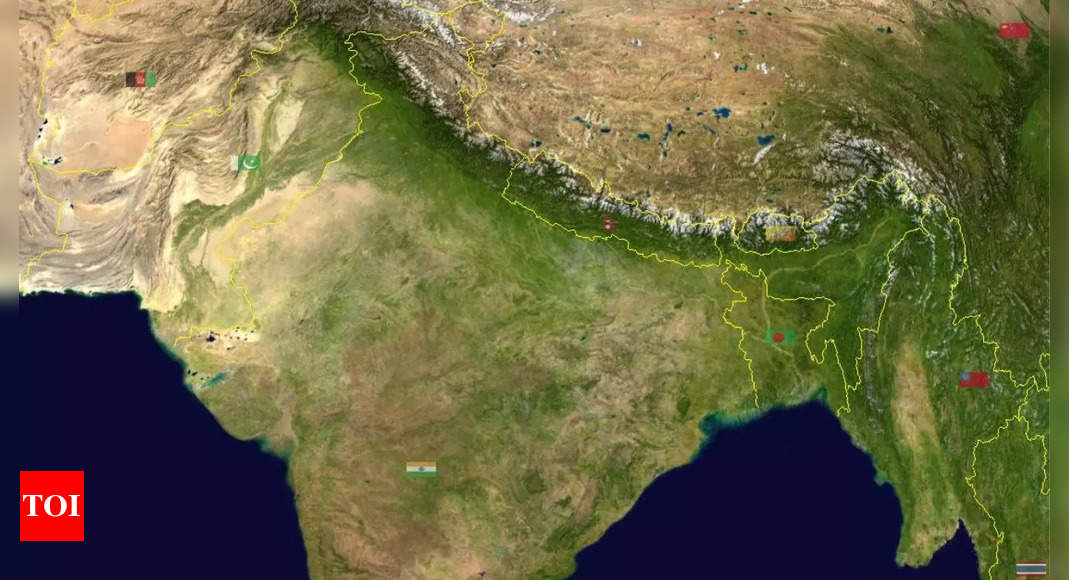Shocking! India’s landmass is shrinking every year by 2 mm, here’s why | helobaba.com

The answer lies in the movement of the tectonic plates, the giant pieces of the Earth’s crust that float on the mantle, the layer below the crust. India is located on the Indian plate, which is moving northward at a speed of about 5 cm per year. This plate is colliding with the Eurasian plate, which carries most of Asia and Europe. This collision, which has been happening for millions of years, is responsible for the formation and growth of the Himalayan mountains, the highest in the world. The Himalayas are still rising by about 1 cm per year, as the Indian plate pushes against the Eurasian plate.

The Himalayas continue to get taller by 1 cm every year as the tectonic plates continue to shift and merge. Source: Canva
However, this collision also means that India’s landmass is getting squeezed and deformed as it pushes against the rigid Eurasian plate. The Indian plate is not flat but curved, and as it slides under the Eurasian plate, it bends and buckles. This creates strain and stress in the crust, which can be measured by satellite-based data and global positioning system (GPS) stations across India and its neighboring regions. Scientists and seismologists have found that the distance between different points in India and Tibet is decreasing every year, indicating that the crust is under compression. For example, the distance between Mussoorie and Badrinath in the western Himalayas is now 1.5 cm less and decreasing every year. Similarly, the distance between Bangalore and Lhasa in Tibet is also 4 cm shorter.

A graphic representation of how the tectonic plate shift is occurring in the Indian landmass. Source: NASA
This movement of the Indian plate has significant implications for seismic hazards and future earthquakes in the region. The Himalayas are still young and active, and as they grow taller, they also split into layers on the surface. These layers can slide past each other, creating faults and fractures. The Indian plate is also peeling off or delaminating, meaning that its lower part is detaching from the upper part and sinking into the mantle. This creates anomalous signals of helium isotopes in the Tibetan springs, which indicate the depth and extent of the delamination.
The delamination of the Indian plate is different from the rifting of the African plate, which is leading to the formation of a new ocean and a new microcontinent in East Africa. The rifting is caused by the stretching and thinning of the crust, whereas the delamination is caused by the compression and thickening of the crust. Both processes, however, result in the reduction of the landmass of the respective continents.
The long-term consequences of the shrinking of India’s landmass are hard to predict, but some scientists have speculated that after 200 million years, there would be no India, only a vast mountain range along the southern coast of China. While this may seem like a distant and unlikely scenario, the immediate worry is the impending quakes that may result from the accumulation of strain and stress in the crust. The Himalayan region is one of the most seismically active zones in the world and it has witnessed several devastating earthquakes in the past. The recent analysis of the movement of the Indian plate suggests that the risk of such earthquakes is still high and that the people living in the region should be prepared for the worst.
4.6 Magnitude earthquake jolts southern California Coast near Malibu









